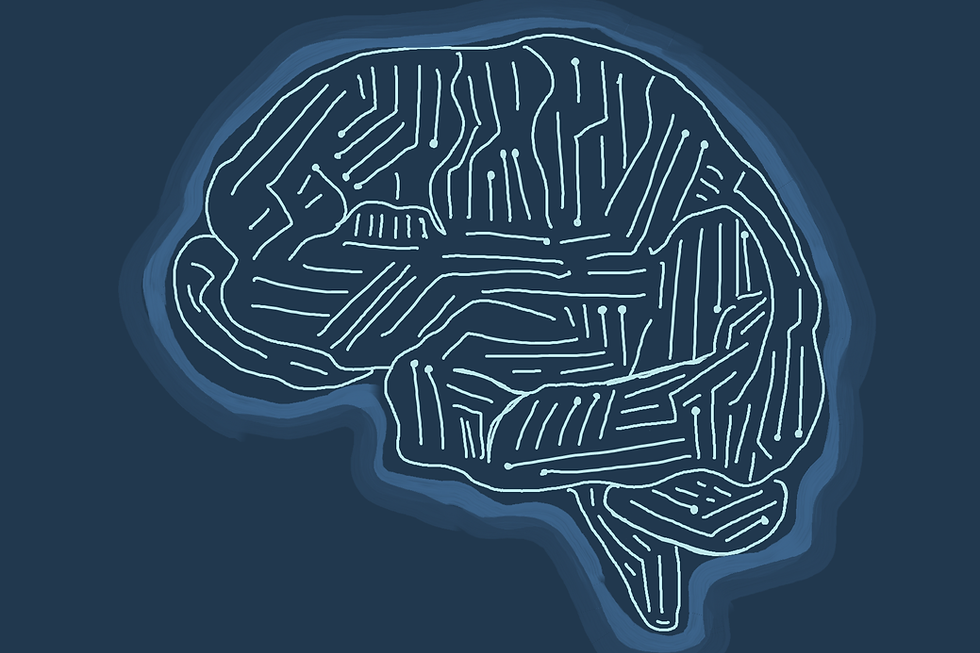Food for Thought: Neural Connectivity Changes and Food Addiction
- The Natural Philosopher
- Nov 10, 2018
- 3 min read
By Toby Lanser
Addiction has long been thought of as a behavioral flaw that can be curbed and controlled. Over the years, however, advances in the field of neuroscience and psychology have started to shed light on underlying neurological differences in individuals susceptible to addiction. Furthermore, it has been theorized that addiction could arise through the deprivation of necessary inputs (ie. food, relative amounts of reward signaling, etc.), creating higher than normal activity in reward pathways in the brain. In a paper published this year in Appetite, titled “Food addiction (FA) linked to changes in ventral striatum functional connectivity between fasting and satiety” the authors discussed how the ventral caudate-hippocampus, a subregion of the hippocampus which is involved in memory, changes in individuals who experience an intense fasting period. This important work aims to support the argument that addiction has a neurological basis, which in the future could lead to patient specific treatments targeting specific regions of the brain.
The experimenters employed a myriad of techniques to determine how the ventral caudate-hippocampus is involved in known, or unknown, reward pathways. First, they recruited thirty adults varying in age and sex based on the results from a questionnaire used to indicate potential food addiction developed by Yale University. From there, participants took part in an MRI session, using an ultra-high resolution MRI called 3-T MRI to compare brain connectivity between two different states: fasting and post-fasting (eating). The fasting stage consisted of volunteers not eating for a 10 hours period before imaging, while the fed stage had participants eat a controlled meal relative to their respective body mass index (BMI) score 45 minutes before the session. The MRI results were analyzed using MATLAB, a coding language used to aggregate large amounts of data to plot and implement algorithms, which is often used for data analysis in scientific research.
Additionally, the authors used what’s known as a “seed-based analysis” to compare changes in connectivity of the two states. A seed-based analysis is an important and commonly used method in neurobiology to explore brain connectivity based on MRI images. The authors aggregated the processed data to create a handful of scatter plots to visualize changes in brain connectivity between the tested states. One of them (Fig 1.) elucidates the “the correlations between the functional connectivity change in the VC – right(R)/left(L) hippocampus (y-axis) and the level of food addiction symptoms (x-axis).”

Informationally, this means as the data points move further to the right on the two graphs, the symptoms of food addiction increase. The vertical axis indicates the “functional connectivity,” which is the connectivity of different brain regions that share functional properties This functional connectivity focuses on the brain region of interest, and as data points move higher up, the connectivity within the hippocampus increases. As one can see, there is a positive, linear correlation between the connectivity and food addiction.
From these results, the authors concluded that “higher symptoms of FA were linked to greater changes in the functional connectivity between the ventral striatum and the hippocampus, but not in the dorsal striatum network, from fasted to fed scans.” This is interesting because the dorsal striatum network is a well-known and well-documented reward pathway associated with many addictions. These results further the argument that addiction has a neurological basis with an ever-increasingly complicated inception. With dorsal striatum network not being involved with food addiction, it opens the door for other addiction-related nutritional health issues to take a new route in the brain, literally, through the hippocampus.
References:
Contreras-Rodriguez, O., Burrows, T., Pursey, K., Stanwell, P., Parkes, L., Soriano-Mas, C., & Verdejo-Garcia, A. (2018). Food addiction linked to changes in ventral striatum functional connectivity between fasting and satiety. Appetite. doi:10.1016/j.appet.2018.10.009


Comments